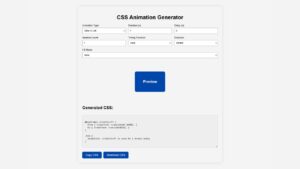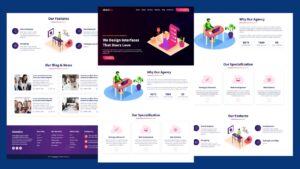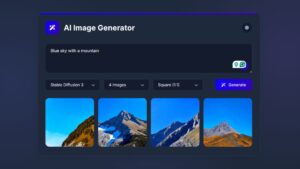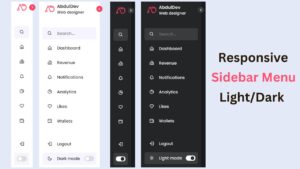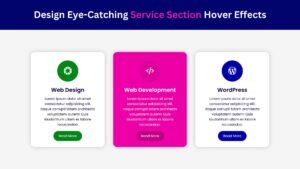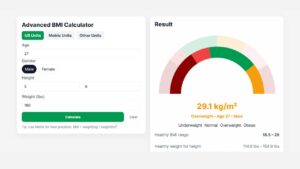
Top 5 Programming Languages for Front-End Development

Front-end development is the cornerstone of modern web design, focusing on creating visually appealing and user-friendly interfaces. To succeed in this domain, selecting the right programming language is critical. In this article, we’ll explore the top 5 programming languages every aspiring front-end developer should consider mastering.
What is the meaning of Programming Language?
Programming language is a technical skill involving instructions or commands used to create software programs. It is the backbone of the web development industry. In the world of web development, there are two main types of programming languages: frontend and backend. Frontend languages deal with the user interface and how a website looks, while backend languages deal with how a website functions and data is stored.
Frontend development skills are essential in creating a responsive web design that is easy to navigate and visually appealing. One of the popular frontend languages is a markup language known as HTML, which is responsible for creating the default structure of a web page. A style sheet called Cascading Style Sheet (CSS) defines how HTML elements should be displayed on a webpage. A scripting language called JavaScript adds interactive features to a webpage, making it more user-friendly.
The popularity of programming languages has increased over the years, with more languages being developed to cater to specific web development needs. Some popular programming languages include React and Angular, used in front-end development. These languages offer robust frameworks that make developing scalable and high-performance applications easy. Read more about types of websites.
Importance of Learning Programming Languages
Programming Languages are the backbone of modern technology and play a vital role in developing websites, mobile applications, and software programs. As a front-end developer, you need to learn and understand different front-end and popular programming languages that can be used to design and develop user-friendly and visually appealing web applications. With a solid foundation in programming languages such as HTML, CSS, and JavaScript, you can easily create dynamic, interactive web pages that attract and engage users. Furthermore, being familiar with back-end languages like PHP, Python, and Ruby is essential, as they help create and manage server-side applications. Learning these programming languages can enhance your skill set and make you an in-demand front-end developer capable of creating unique web applications. So, start your learning journey today and explore the exciting world of front-end development!
Top 5 Programmaing Languages

When it comes to front-end development, knowing the correct programming language can make all the difference. A front-end language is used to create the visual components of a website, such as buttons, menus, and text boxes. The correct language can help you make an intuitive and user-friendly interface that is attractive and functional.
Here are the top 5 programming languages for front-end development:
- HTML – It is used to create the structure and content of web pages. HTML is easy to learn and is used in conjunction with other programming languages such as CSS and JavaScript.
- CSS – This language is used to style HTML content. It creates visually appealing web pages by controlling the layout, colors, fonts, and other visual elements.
- JavaScript – This popular language for creating interactive web pages. JavaScript can be used to create animations, respond to user input, and dynamically change the content of a web page.
- React – This JavaScript library is used for building user interfaces. React is popular because it allows developers to create complex web applications quickly.
- Angular – This front-end framework is used for building dynamic web applications. Many developers use it because it is powerful, flexible, and easy to use.
Learning these programming languages will enhance your skills as a front-end developer and help you create more effective and visually appealing web pages. Whether you’re a beginner or an experienced developer, it is always worth investing time learning the top programming languages for front-end development.
1) HTML
HTML (Hypertext Markup Language) is one of web development’s most fundamental programming languages. It forms the foundation for creating web pages and building user interfaces. As a markup language, it uses tags to format and structure content on a webpage.
HTML is an essential skill for any front-end developer as it is used to create the structure and content of a website. Understanding HTML tags is critical because they add headings, paragraphs, images, videos, and links to a webpage. It is an easy-to-learn programming language, and beginners can pick it up quickly.
In recent years, HTML has become more dynamic and can incorporate multimedia content, responsive designs, and complex interactive web elements. HTML5 is the latest version, with new features such as improved multimedia, audio, and video capabilities.
HTML works closely with CSS and JavaScript to create stunning, interactive web pages. Without HTML, web pages would be plain text documents without formatting, images, or other visual elements.
Learning HTML is an essential skill for every front-end developer. With HTML knowledge, you can create web pages and interfaces that are both beautiful and functional. It is the backbone of any web development project, and mastering HTML can help you advance your career as a front-end developer.
2) CSS
CSS or Cascading Style Sheets is another essential programming language that plays a vital role in front-end development. This language is responsible for the design aspect of the website, which means it takes care of all the styling and formatting of the content on the webpage.
CSS adds colors, fonts, spacing, and layout to web pages, making them visually appealing to users. This language has many functions, including creating and modifying fonts, adding effects to text, and manipulating images.
In addition, CSS offers excellent flexibility in web design, allowing developers to create responsive designs that adjust automatically to fit any device’s screen size. It is a must-have skill for front-end developers as it helps to create modern and interactive websites that are visually appealing to users. Some popular CSS frameworks include Bootstrap and Materialize CSS, which offer a pre-designed set of CSS styles, making it easier for developers to create modern web designs.
To master CSS, it’s essential to understand its syntax and how it interacts with HTML and JavaScript. This language requires a lot of practice, patience, and attention to detail to achieve mastery.
3) JavaScript
JavaScript is the most popular programming language among front-end developers. It is a dynamic and high-level language for developing interactive and responsive web applications. JavaScript allows developers to create dynamic website content, validate forms, add animations, and perform other essential tasks.
One of the best things about JavaScript is its versatility. It can be used for front-end, back-end, and mobile application development. It has a wide range of libraries and frameworks, such as jQuery, React, Vue, and Angular, which make development faster and more efficient. JavaScript is an essential skill for front-end developers, constantly evolving. With new features and improvements added regularly, staying updated with the latest trends and techniques is necessary. Learning JavaScript is a must for every front-end developer, and mastering it will open doors to endless opportunities.
One can start with online tutorials, courses, or reading books on the subject to learn JavaScript. Practice is vital to becoming proficient in JavaScript, so creating and working on small projects is highly recommended. In addition, collaborating with other developers and participating in online forums and communities can help you stay up-to-date with the latest trends and techniques.
Overall, JavaScript is a must-have programming language for front-end developers. It allows you to create interactive and responsive web applications, and with its versatility and ever-evolving nature, it’s an exciting language to learn and work with.
4) React
React is another popular programming language used for front-end development. It is an open-source JavaScript library maintained by Facebook, first introduced in 2011. React has quickly gained popularity and is now used by major tech companies like Airbnb, Instagram, and Netflix.
One of the main benefits of using React is that it allows developers to build dynamic, fast, and responsive web applications. It follows a component-based architecture, meaning the UI is broken down into reusable components, making the code more modular and easier to maintain. React also has a robust set of tools and libraries, making it easier to build complex web applications. For example, the React Native library allows developers to build mobile apps for iOS and Android using the same codebase as their web app.
Another significant advantage of React is its large and active community of developers. This means that developers can easily find resources, tutorials, and answers to their questions on online forums and communities.
React is a powerful programming language that can help developers build fast, responsive, and modular web applications. It has a large community and a range of tools and libraries, which make it easier to build complex web applications.
5) Angular
Another popular programming language for front-end development is Angular. Google maintains this open-source JavaScript framework and has recently gained much popularity among developers. Angular is ideal for building complex, dynamic web applications with a single-page architecture.
One of the main benefits of Angular is its two-way data binding, which makes it easier for developers to create real-time applications that can be updated without manual refreshes. It also offers a range of powerful features, such as dependency injection and directive templates, which can help developers streamline the development process and create cleaner, more maintainable code.
Another advantage of Angular is its strong community support. The platform has a vast ecosystem of tools and resources, including a comprehensive documentation set, active forums, and an extensive library of third-party extensions and plugins. This makes it easy for developers to find the support and resources to build better applications with Angular.
Benefits of Learning Programming Languages
Learning programming languages, especially those used for front-end development, can offer numerous benefits to individuals looking to improve their technical skills and career prospects. Some of the benefits of learning programming languages include:
- Better job prospects: With the increasing demand for front-end developers, knowing programming languages can give individuals an edge in their job search. Being proficient in programming languages can increase their chances of getting hired by companies that require front-end development skills.
- Increased productivity: Knowing how to code in different programming languages can help front-end developers to work more efficiently. They can develop more robust and dynamic web applications faster and with fewer errors. This translates to faster project turnaround times and more efficient use of time and resources.
- Improved communication with team members: Knowing programming languages can help front-end developers communicate better with their team members, especially those involved in the back-end development process. They can better understand the coding structures and technical requirements, enhancing collaboration and teamwork.
- Flexibility: Learning different programming languages can give front-end developers more flexibility when choosing the correct terminology for a particular project. They can determine the most suitable programming language based on project requirements and specific functionalities needed.
- Increased innovation: Learning programming languages can help front-end developers stay up-to-date with emerging trends in web development and introduce new ideas into their work. This can enhance their creative problem-solving skills, improve their work quality and offer more innovative solutions to clients.
Learning programming languages can provide front-end developers with a competitive advantage in the tech industry, offering improved job prospects, collaboration, increased productivity, flexibility, and enhanced innovation.
Conclusion
Front-end development is an ever-evolving field, and mastering the right programming languages is vital for staying competitive. Start with HTML, CSS, and JavaScript as the foundational trio, then expand your skill set with TypeScript and Sass for more advanced projects. With these tools in your arsenal, you’ll be well-equipped to create modern, responsive, and dynamic web applications.
FAQs
JavaScript is the backbone of front-end development, allowing you to add interactivity and dynamic behavior to web pages. All modern web browsers support it and have a vast ecosystem of libraries and frameworks.
HTML (Hypertext Markup Language) is not a programming language. It is a markup language used for structuring and presenting content on the web. HTML provides the foundation for building web pages.
CSS (Cascading Style Sheets) defines HTML elements’ visual appearance and layout on a web page. It enables developers to customize colors, fonts, spacing, and other design aspects, resulting in an aesthetically pleasing user interface.
React is not a programming language but a JavaScript library for building user interfaces. It is widely adopted due to its component-based architecture, virtual DOM, and efficient rendering. React simplifies the development of complex UIs and promotes code reusability.
More than JavaScript is required for front-end development. HTML provides the structure and content of a web page, while CSS handles the visual styling. JavaScript enhances the interactivity and behavior of the page but relies on HTML and CSS for presentation.
Share on Social Media
Related Articles

How to Design Agency Website Using HTML, CSS, and JavaScript
Learn how to build a stunning, responsive design agency website using HTML, CSS, and JavaScript. This beginner-friendly guide covers planning,

Hostinger Review 2025: Is It Still the Best Affordable Web Hosting Service?
Discover Hostinger’s 2025 review: Is it still the best affordable web hosting service? Explore its pricing, performance, features, and customer

10 Best Freelancing Skills to Learn for Students in
Discover the top 10 best freelancing skills for students in 2025. Learn valuable, in-demand skills like Web Development, Graphic Design,

